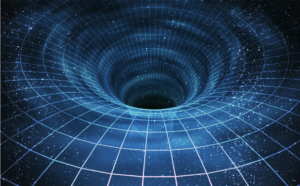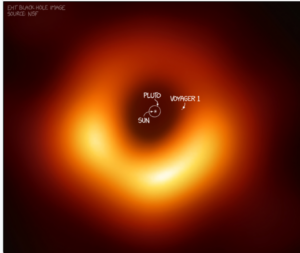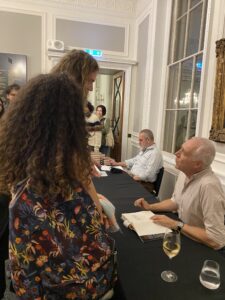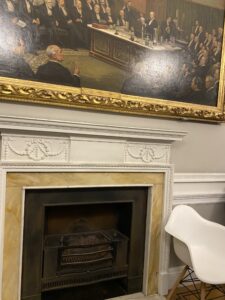
Black holes at the Royal Institution
September 24, 2024
It’s always an incredible privilege to talk at London’s Royal Institution. I mean 10 chemical elements were discovered there, 14 Nobel prizes were earned and our electrical world was invented by Michael Faraday! It was fab to see so many people who had come out on a rainy evening to hear me talk about black holes and it was great to talk to many of them at the book-signing afterwards. Here is the video of my talk

The Royal Institution lecture theatre is a lot smaller than it looks on TV! Here I am beneath a giant image of the black hole in the nearby galaxy, M87.

A black hole is a bottomless pit in space-time from which nothing, not even light can climb out



Far from being black, the black holes we have observed are among the most prodigiously luminous of objects in the universe. And although they are certainly holes down which matter vanishes, their most striking feature can be enormous “jets” of matter, which stab outwards for years until they slam into the intergalactic medium, creating giant radio “lobes” like these on either side of the galaxy Cygnus A

Image of the 6.5 billion solar mass black hole in the heart of M87. Once matter passes through the event horizon – the point of no return or in-falling light and matter – and into the void, it is never seen again in our universe




The wonderful carpet at the Royal Institution depicts iron filings in a magnetic field. Michael Faraday was the first to recognise that the space around a magnetic is permeated by an invisible force-field. By doing so, he pretty much invented 21st-century physics since fields are seen as the most fundamental entities in the universe